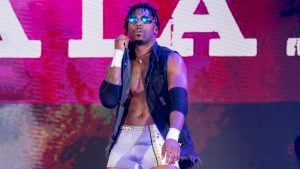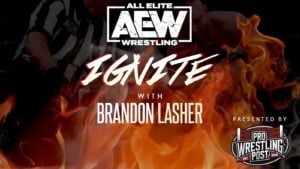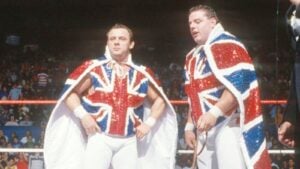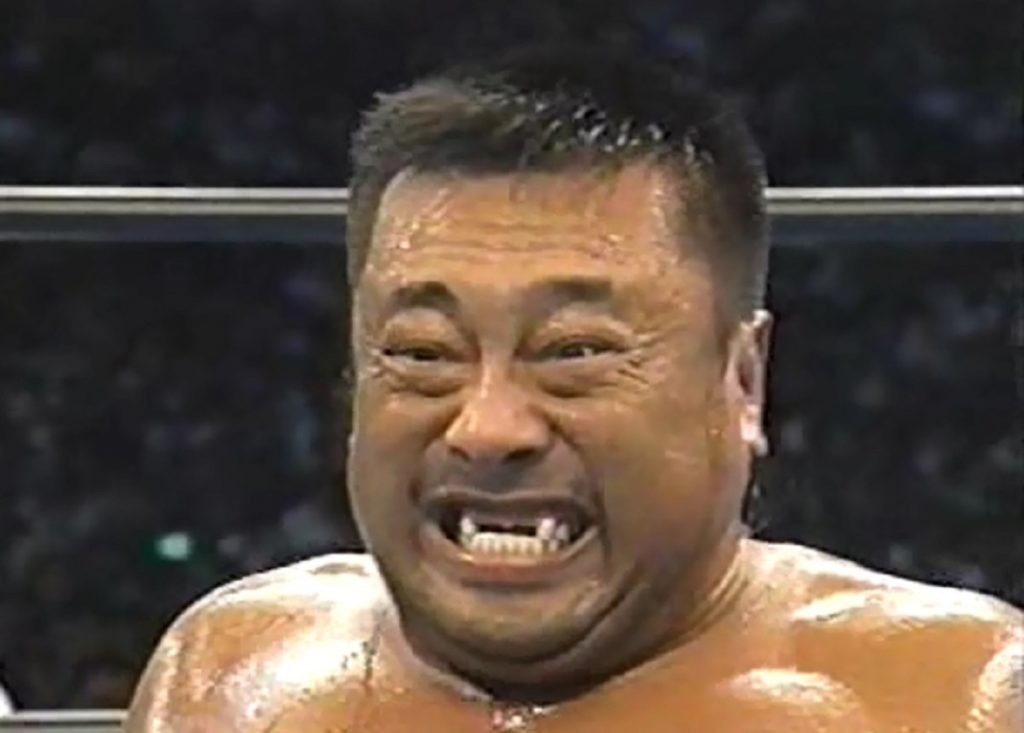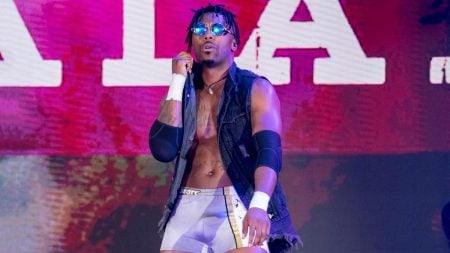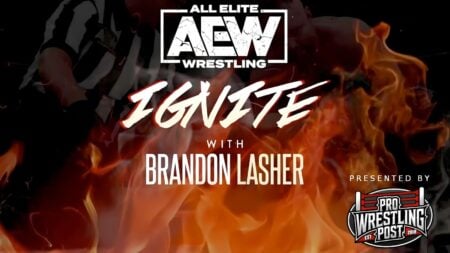Few wrestlers are able to conjure up as much fear as Toshiaki Kawada. He’s a wrestler of mythic proportions. He exudes an aura of badassery that few wrestlers have been able to match. This stems from his reputation as being arguably the hardest hitting wrestler to ever step foot in a wrestling ring.
Today we look at the career of Toshiaki Kawada, and how he became known as the most dangerous wrestler in Japan.
Toshiaki Kawada & Mitsuharu Misawa
– Rivals From The Beginning
When one looks at the career of Toshiaki Kawada, there’s a second name that comes up right away: Mitsuharu Misawa. These two were more joined at the hip as wrestlers than any other duo in puroresu history. And that’s because they share such a lengthy and convoluted history together.
Kawada and Misawa went to the same high school, and both did amateur wrestling as seniors. Misawa was a year older and played a key role in Kawada’s future. It was Misawa that convinced Kawada to join AJPW’s dojo instead of NJPW’s upon graduation. Ironically, the man that Kawada beat to become a national amateur wrestling champion was none other than Keiichi Yamada, better known as Jushin ‘Thunder’ Liger.
Misawa and Kawada spent the early 1980s wrestling as rookies in AJPW. They wrestled against each other four times between December 1982 and October 1983, with Misawa winning all of those matches. Then it was time for the traditional foreign excursion, and this is where things really started to darken for Kawada.
Worlds Apart
Misawa and Kawada went on their respective foreign excursions around the same time but to different places. Misawa went to Mexico and Kawada went to both the United States and Canada. While in Mexico, Misawa learned some aerial techniques. He became a quicker wrestler, and not long into his excursion, Misawa was called back to Japan.
AJPW owner Giant Baba bought the rights to the Tiger Mask gimmick and chose Misawa to don the mask. In doing so, Misawa became the high-flying star of the promotion and started working with some of the biggest international stars AJPW could bring in.
As for Kawada, his foreign excursion…sucked. He bounced around between wrestling in Texas, Quebec, and Alberta, under different names. At one point he was called Black Mephisto. In another promotion, he was billed as ‘Kio Kawada from Seoul, South Korea’, despite not actually being Korean.
Kawada was said to be miserable during this period. He was wasting away wrestling in nothing matches in different companies and wasn’t treated like a big star. Meanwhile, Misawa was getting all the glory and benefitted from wearing a mask, which Kawada thought would’ve helped him much more.
Sometime during this period, the seeds of doubt and bitterness were planted in Kawada, and he became consumed with the idea of being better than Misawa, both in the eyes of the fans and in the eyes of AJPW’s management.
Toshiaki Kawada | Footloose
Upon his return to AJPW, Kawada began teaming with then-main-eventer Genichiro Tenryu and Samson Fuyuki. The latter was Kawada’s partner more often, and the duo – known as Footloose – won AJPW’s secondary tag titles, the All Asia Tag Team Championships, on three separate occasions between 1988 and 1989.
He also got one of his first big chances to show off his skills on a main-event level. He teamed with Tenryu in the main event of the 1988 World’s Strongest Tag Determination League tournament, but they lost to winners Stan Hansen and Terry Gordy.
Allegiances Change
Kawada’s status as a lower-carder came to an end in 1990 when the AJPW roster was rocked by a major departure, Tenryu and many other top stars left AJPW to form their own promotion, Super World of Sports. To fix this, Baba shifted allegiances to help elevate an entire class of younger stars, Kawada among them.
Thus, the new main story in AJPW became veteran star Jumbo Tsuruta and his cohorts versus Misawa and his army of rising stars. Kawada was promoted to being Misawa’s right-hand man, and the two of them teamed against AJPW’s top wrestlers for the better part of the next two-and-a-half years.
And yet, Kawada was still unhappy in this role. He thought himself a better wrestler than Misawa but was still playing second fiddle to the Green Machine. But fate would intervene on Kawada’s behalf, albeit in a twisted sort of way.
In the fall of 1992, Jumbo Tsuruta was diagnosed with Hepatitis. Because of this, he could no longer wrestle at a main-event level. This left Misawa without a major foe to war with, especially after Misawa beat Hansen to become Triple Crown Heavyweight Champion.
So Baba, the genius that he was, decided once again to change the balance of power in AJPW. Taking advantage of the growing tension between Misawa and Kawada, Baba split them up. But not before Kawada got a shot at Misawa’s Triple Crown Heavyweight Title on October 21st, 1992, albeit in a losing effort.
https://twitter.com/RespectSuwama/status/1289301092799401984
By 1993, Kawada had turned on Misawa and joined forces with Tsuruta’s former ally Akira Taue, forming The Holy Demon Army. Misawa, meanwhile, elevated his #2 partner to his new #1. And that partner’s name was Kenta Kobashi.
And thus, the era of the Four Pillars of Heaven truly began.
Kawada’s Golden Age
Kawada spent the next four years wrestling at a godlike level. His chemistry with other wrestlers – especially his fellow Pillars – was otherworldly. They were able to weave tapestries out of the stories they told in the ring. Each contest was a brutal war, but those were part of a larger narrative being told over the span of years. And central to this new story was that Kawada couldn’t pin Misawa.
Anytime Kawada won a big match (either singles or tag), it was Misawa’s partner that took the fall. Whether that meant Kobashi, Akiyama, Honda, or anyone else, if Kawada was the one in the ring, Misawa wouldn’t be the one getting pinned. Kawada’s desire to change that had profound implications. A lot of people saw Kawada as a more dynamic wrestler than Misawa, yet Misawa was the ace.
So Kawada tried and tried, and no matter what he did, no matter how well he (and his partners) wrestled and sold tickets and captivated audiences, he just couldn’t do it. But he came close many times. He did his best to demolish Misawa whenever he could.
And he almost beat him in their most legendary singles encounter the mythical ‘6-3-94’ match that many people call the greatest wrestling match ever. Although Kawada lost that one as well, he became something of a legend for how well he wrestled.
Toshiaki Kawada | His Greatest Strengths
But what was is about Kawada that made him so great? Well, aside from the sheer length of his catalog of great matches, Kawada had two unique traits about him. First, he drew fans in a special way. While Misawa was the stoic, Taue was the cheater and Kobashi was the traditional hero-in-peril, Kawada was the monster.
He specialized in bringing about unrelenting intensity while going toe-to-toe with an opponent. If he were locked in a strike exchange, he’d add more and more brutality to each one while channeling more strength to absorb his opponent’s punishment.
Whether he took Kobashi’s sickening chops, Misawa’s stiff elbows, or any other hard strike from any other opponent, Kawada would do his damnedest to tank it and fight back. People saw him as a badass, one that absorbed as much pain as he dished out.
Secondly, and most importantly, Kawada’s biggest selling point was…his selling. Kawada had a way of selling pain that few wrestlers did back then or even do now. This is known as ‘delayed selling’. Basically, Kawada would take a move, no-sell it at first, and try to land a move of his own, and THEN succumb to the pain from the earlier move he had taken.
In other words, Toshiaki Kawada would channel his own fighting spirit and try to overcome the pain he had just endured, and just when it looks like he was successful, he’d be overcome with weakness and would fall to recover. This approach – coupled with his tendency to ‘ragdoll himself’ when taking big moves – made his matches some of the most exciting and dramatic wrestling contests in history.
This match demonstrates Kawada’s selling skills perfectly:
A Dream Comes True
But despite being a villain in this rivalry (he came off as angry, bitter, and jealous through his actions in the ring), fans started cheering Toshiaki Kawada over time. They appreciated him for his incredible talent and his ability to tell a story. That led to him finally realizing one of his big dreams.
On June 9th, 1995, Kawada and Misawa faced off again, but this time in tag team competition. In what is hands down the best of all the Four Pillars matches, Toshiaki Kawada and Taue defeated Misawa and Kobashi to win the AJPW World Tag Team Titles. Not only that, but Kawada pinned Misawa, cleanly, in the middle of the ring. It was a decisive, earth-shattering victory for Kawada. He finally showed he could beat Misawa and that he was worthy of being in the world title conversation.
But that wouldn’t last long.
A Grave Mistake
In early 1996, Kawada made a terrible personal choice that would send shockwaves throughout AJPW. In a public forum, he criticized Baba’s longstanding isolationism as a promoter. This was a valid point, given that rival NJPW was making a fortune through inter-promotional rivalries and the ‘foreign invader’ concept.
This was seen as sacrilegious. It’s a bad idea in the world of pro wrestling in general for a wrestler to openly criticize their booker/promoter’s ideas while still being employed with that same booker. But this was worse in tradition-laden, monolithic Japan, where criticizing one’s in-group and ‘rocking the boat’ is deeply frowned upon.
As a modern comparison, think back to 2012 when Dolph Ziggler criticized Randy Orton, questioning WWE’s booking decisions publicly in the process. Many fans saw the obvious punishment/burial that took place afterward and weren’t happy about it. Now imagine if instead of it being Dolph Ziggler, it was Daniel Bryan. That’s basically what happened with Kawada here.
Because of this transgression, Toshiaki Kawada was put in ‘Baba’s doghouse’ for almost all of 1996. Any singles push he would’ve gotten were passed onto other wrestlers. He had to watch from the sidelines as his partner Taue and later the younger Kobashi both won the Triple Crown Heavyweight Championship in what he felt was ‘his’ position. Although he did still wrestle at an elite level throughout that year, he wasn’t able to translate that into the singles success he desired so badly.
Toshiaki Kawada | Bad Luck With Titles
Kawada’s decision to criticize Baba, coupled with his inability to beat Misawa in singles competition, continued to haunt him as the decade wore on. Despite challenging Misawa for the title on several occasions, including yet another fantastic match on June 6th, 1997, Kawada was still unable to take the gold off of his archrival.
His only heavyweight title reign by that point had been a short transitional one from October 1994 to March 1995. And the only great thing about that was his 60-minute epic with Kobashi.
Toshiaki Kawada wouldn’t beat Misawa in important singles competition until May 1st, 1998 when he beat Misawa to capture the world title. But that reign too was short-lived, as Kawada dropped it to Kobashi only 42 days later. Then, in 1999, Kawada thought he’d finally enjoy a long run with the title when he beat Misawa once again to reclaim the title. But both men suffered greatly in that match. Early in that match, Kawada fractured his ulna, yet still continued to wrestle despite the severe damage.
Incidentally, that injury also led to what is now known as the infamous ‘Ganso Bomb’, spot, arguably the most dangerous move ever conceived in wrestling. Kawada had to vacate the title and had to watch his last chance at glory in AJPW disappear through his fingertips.
And this was because some major changes were brewing
A bitter split
When Giant Baba died in 1999, it set in motion a chain of events that would forever fracture whatever remained of Misawa’s and Kawada’s friendship. Misawa was made AJPW president, but his disagreement with Baba’s widow Motoko was so fierce and frequent that he couldn’t bear it for long. Thus, Misawa made a seismic decision. As Tenryu had done before him, he announced the formation of his own company. Tenryu then took many AJPW wrestlers with him.
But unlike Tenryu, Misawa took almost everyone with him. More wrestlers were loyal to and respected Misawa than they did Motoko Baba. But one of the wrestlers that stayed behind was Toshiaki Kawada. He had no interest in following Misawa to NOAH and remained in All Japan alongside aging veteran Masanobu Fuchi and a handful of gaijins that stayed behind.
A downward spiral decade
Kawada stayed with AJPW for most of the 2000s, though he did also wrestle for other promotions like HUSTLE. He was considered the unquestioned ace in this new All Japan, but it was a completely different environment from what it once was. Kawada had few opponents that carried the prestige, credibility, and legitimacy that once defined AJPW’s peak in the 1990s.
Although Kawada did enjoy a long and successful run as champion from September 2003 to February 2005, it was not filled with great title challengers as he had been before. There was no Misawa, Kobashi, Akiyama, Taue, Dr. Death, or Stan Hansen for Kawada to work with. This new AJPW wasn’t Giant Baba’s. Nor did it have the King’s Road style, as those wrestlers all followed Misawa to NOAH. The only exception to this was a fantastic match between Kawada and Satoshi Kojima. The match that ended Kawada’s reign.
A Career That Begins To Slow Down
Kawada’s career from then on started to slow down. He spent more time wrestling in cross-promotional shows like NJPW’s Wrestle Kingdom. The G1 Climax and in HUSTLE. His final AJPW match took place on April 9th, 2008. Here he defeated then AJPW president Keiji Mutoh.
Toshiaki Kawada has not “officially” retired from pro wrestling. But hasn’t actually wrestled a match in almost ten full years. His last wrestling match took place on August 15th, 2010. It was a six-man tag team match in New Japan.
In a somewhat ironic twist, Kawada has since explained that he hasn’t wrestled after this because of Misawa’s death. Despite their friendship more or less ending in 1999 (and despite them wrestling one last time in NOAH in 2005), Kawada’s passion for puroresu had diminished greatly following Misawa’s death. His only appearances in wrestling since then have been either as a commentator or for a surprise appearance. In particular, such as for the retirement ceremonies for Kobashi and Taue.
Legacy
Kawada’s legacy will be a dual one. On one hand, he was one of the best wrestlers in the world during his prime. He was amazing at telling a story, dishing out punishment. Enduring incredible pain, and convincing people he had genuine animosity towards his opponents. His matches will go down in history as some of the greatest and most brutal to ever take place. And his stiff, martial arts-inspired style has been replicated and emulated by many wrestlers around the world.
Perhaps the most notable example is Daniel Bryan. Bryan’s signature ‘Yes Kicks’ are a carbon copy of how Toshiaki Kawada kicked the hell out of his opponents. The only difference is that Bryan hits with much less force than Kawada did.
On the other hand, he is perhaps the best example of being a perpetual #2 in a company. No matter what he did, he was always seen as secondary to Misawa. In many ways, he is to Misawa what Randy Orton is to John Cena. Despite being accomplished in his own right, he’s seen as being at a level below the company’s franchise player.
All that said, Kawada’s wrestling matches are absolute gems. He had this uncanny ability to make you feel you were watching a personal war unfold inside a wrestling ring. He was as brutal and intense as they got. Even though he was never the true ace of any promotion. He managed to become a bigger wrestling badass than anyone else in his locker room.
